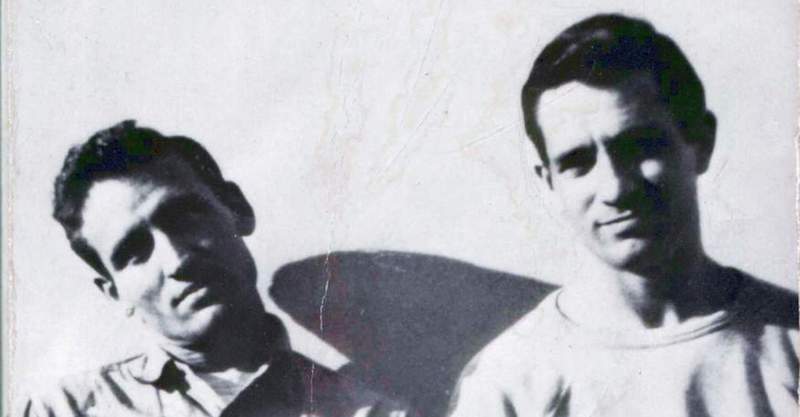
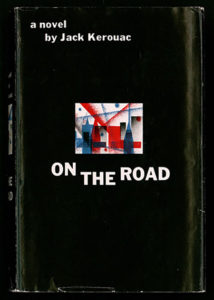
“…the only people for me are the mad ones, the ones who are mad to live, mad to talk, mad to be saved, desirous of everything at the same time, the ones who never yawn or say a commonplace thing, but burn, burn, burn like fabulous yellow roman candles exploding like spiders across the stars…”
*
“On the Road is the second novel by Jack Kerouac, and its publication is a historic occasion in so far as the exposure of an authentic work of art is of any great moment in an age in which the attention is fragmented and the sensibilities are blunted by the superlatives of fashion (multiplied a millionfold by the speed and pound of communications).
This book requires exegesis and a detailing of background. It is possible that it will be condescended to by, or make uneasy, the neo-academicians and the ‘official’ avant-garde critics, and that it will be dealt with superficially elsewhere as merely ‘absorbing’ or ‘intriguing’ or ‘picaresque’ or any of a dozen convenient banalities, not excluding ‘off beat.’ But the fact is that On the Road is the most beautifully executed, the clearest and the most important utterance yet made by the generation Kerouac himself named years ago as ‘beat,’ and whose principal avatar he is.
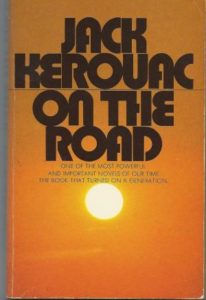
“Just as, more than any other novel of the Twenties, The Sun Also Rises came to be regarded as the testament of the ‘Lost Generation,’ so it seems certain that On the Road will come to be known as that of the ‘Beat Generation.’ There is, otherwise, no similarity between the two: technically and philosophically, Hemingway and Kerouac are, at the very least, a depression and a world war apart.
Much has been made of the phenomenon that a good deal of the writing, the poetry and the painting of this generation (to say nothing of its deep interest in modern jazz) has emerged in the so-called ‘San Francisco Renaissance,’ which, while true, is irrelevant. It cannot be localized. (Many of the San Francisco group, a highly mobile lot in any case, are no longer resident in that benign city, or only intermittently.) The ‘Beat Generation’ and its artists display readily recognizable stigmata.
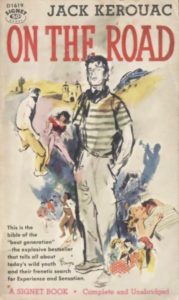
“Outwardly, these may be summed up as the frenzied pursuit of every possible sensory impression, an extreme exacerbation of the nerves, a constant outraging of the body. (One gets ‘kicks’; one ‘digs’ everything whether it be drink, drugs, sexual promiscuity, driving at high speeds or absorbing Zen Buddhism.)
Inwardly, these excesses are made to serve a spiritual purpose, the purpose of an affirmation still unfocused, still to be defined, unsystematic. It is markedly distinct from the protest of the ‘Lost Generation’ or the political protest of the ‘Depression Generation.’
The ‘Beat Generation’ was born disillusioned; it takes for granted the imminence of war, the barrenness of politics and the hostility of the rest of society. It is not even impressed by (although it never pretends to scorn) material well-being (as distinguished from materialism). It does not know what refuge it is seeking, but it is seeking.

“As John Aldridge has put it in his critical work, After the Lost Generation, there were four choices open to the post-war writer: novelistic journalism or journalistic novel-writing; what little subject-matter that had not been fully exploited already (homosexuality, racial conflict), pure technique (for lack of something to say), or the course I feel Kerouac has taken —assertion ‘of the need for belief even though it is upon a background in which belief is impossible and in which the symbols are lacking for a genuine affirmation in genuine terms.’
Five years ago, in the Sunday magazine of this newspaper, a young novelist, Clellon Holmes, the author of a book called Go, and a friend of Kerouac’s, attempted to define the generation Kerouac had labeled. In doing so, he carried Aldridge’s premise further. He said, among many other pertinent things, that to his kind ‘the absence of personal and social values is not a revelation shaking the ground beneath them, but a problem demanding a day-to-day solution. How to live seems to them much more crucial than why.’ He added that the difference between the ‘Lost’ and the ‘Beat’ may lie in the latter’s ‘will to believe even in the face of an inability to do so in conventional terms’; that they exhibited ‘on every side and in a bewildering number of facets a perfect craving to believe.’

“That is the meaning of On the Road. What does its narrator, Sal Paradise, say? ‘The only people for me are the mad ones, the ones who are mad to live, mad to talk, mad to be saved, desirous of everything at the same time, the ones who never yawn or say a commonplace thing, but burn, burn, burn like fabulous yellow roman candles.’
And what does Dean Moriarity, Sal’s American hero-saint say? ‘And of course no one can tell us that there is no God. We’ve passed through all forms. Everything is fine, God exists, we know time. God exists without qualms. As we roll along this way I am positive beyond doubt that everything will be taken care of for us — that even you, as you drive, fearful of the wheel the thing will go along of itself and you won’t go off the road and I can sleep.’
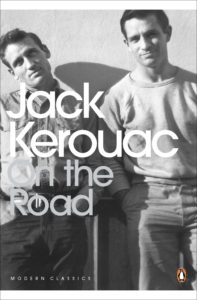
“This search for affirmation takes Sal on the road to Denver and San Francisco; Los Angeles and Texas and Mexico; sometimes with Dean, sometimes without; sometimes in the company of other beat individuals whose tics vary, but whose search is very much the same (not infrequently ending in death or derangement; the search for belief is very likely the most violent known to man).
There are sections of On the Road in which the writing is of a beauty almost breathtaking. There is a description of a cross-country automobile ride fully the equal, for example, of the train ride told by Thomas Wolfe in Of Time and the River. There are details of a trip to Mexico (and an interlude in a Mexican bordello) that are by turns, awesome, tender and funny. And, finally, there is some writing on jazz that has never been equaled in American fiction, either for insight, style or technical virtuosity. On the Road is a major novel.”
–Gilbert Millstein, The New York Times, September 5, 1957

